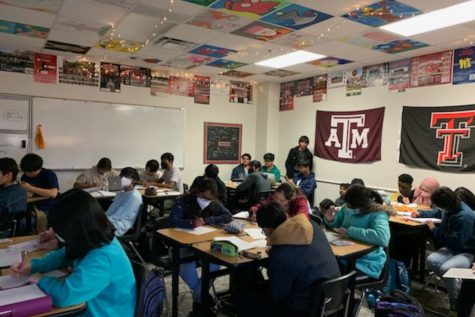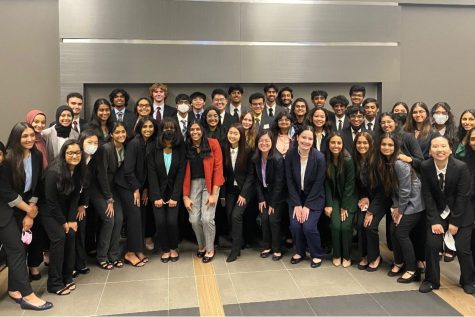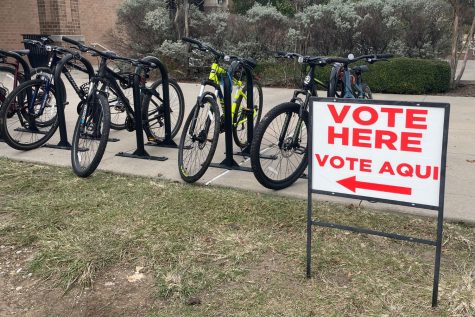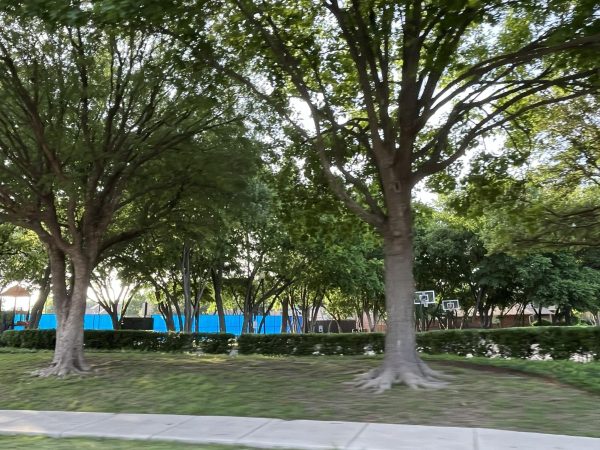Teen vices: A look into illegal substances
Drug abuse among teens is down while drug availability continues to rise
Smoking marijuana is more than just recreational for anonymous student John Smith. It’s habitual. It’s routine. And, after a couple years of abusing the drug, it’s become normal. Weed, pot, dope, Mary Jane–with whatever street name it adopts, marijuana continues to find its way into the lives of many students.
I make sure to stay safe with everything I do. I have seen a lot of people get sucked up in it, but I won’t be that person.
— Anonymous student John Smith
“It’s not so much because I was pressured into as much as it is just for stress relief,” Smith said. “I just had a lot of older friends and that’s how I started first. I just smoke [marijuana] but I have seen other stuff, too. I try not to get into that stuff though.”
Recent medical and psychological research suggests that teens may be more prone to addiction and mental illness than adults. Still, Smith is just one of the many teens who believe they can avoid addiction while still habitually abusing illegal drugs.
“I really don’t think it’s an issue,” Smith said. “It doesn’t hurt my school work. It actually kind of helps because of stress from homework and stuff like that. I make sure to stay safe with everything I do. I have seen a lot of people get sucked up in it, but I won’t be that person.”
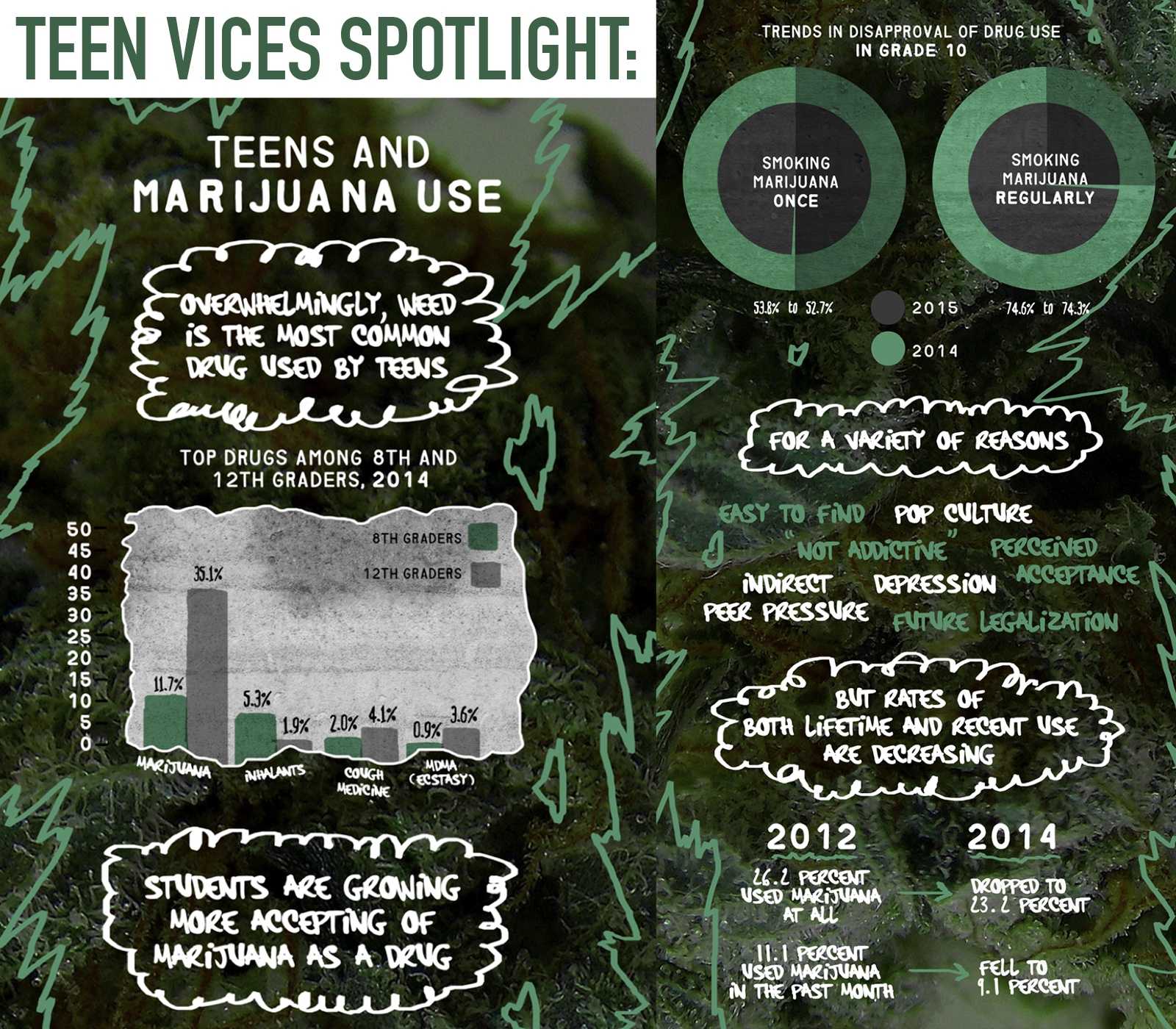
Although some students may not thoroughly understand the risks of drug use, faculty members have expressed concerns regarding the increasing normality of illegal substances among students on and off campus.
“Students are not thinking when they use drugs,” AP Psychology teacher Kaitlyn Little said. “And part of the issue that we’ve encountered and that researched has discovered is that students make these decisions because the frontal lobe, the decision-making area of the brain, is not fully formed so they’re not really able to make good choices.”
What just started off as an experimentation or curiosity or desire to self-medicate briefly forms into a more psychological dependence. And from there it’s a whole different beast.
— Kaitlyn Little
Nonetheless, choices are made due to a variety of impulses that, as a result of social media, are more easy to act on than ever. As evidenced by student surveys collected by the Palm Beach Institute, peer pressure is not the lone cause of teen drug use as once thought.
“There are several reasons students do drugs,” Little said. “One is boredom. Another one is avoidance. And then one is just experimentation, unfortunately. It really depends on the individual’s situation. For students who are using drugs to self medicate, maybe they’re depressed, maybe they can’t focus. And they can select from an unfortunately large array of drugs that are available to them.”
Whatever the reason, Little worries that students psychologically underestimate their risks of developing an addiction.
“Once they experiment, I don’t think students realize how easy it is to get hooked,” Little said. “So what just started off as an experimentation or curiosity or desire to self-medicate briefly forms into a more psychological dependence. And from there it’s a whole different beast.”
SRO Officer Jerry Varner spoke before parents at a PTSA drug information meeting earlier this school year to educate attendees about the risks of drug use among teenagers, allowing parents to express their concerns and ask any questions they had. While school faculty has been able to manage drug abuse on campus well in years past, the increasing availability of illegal substances poses apparent risks to all students and, thus, school administration has committed to treating this issue with precaution.
You could be the smartest kid in the school. You could be any color, boy or girl. It doesn’t matter. If it gets a hold of you, it’s a struggle.
— Jenni Montes
According to the National Institute on Drug Abuse, the drug problem among teenagers is less about students abusing marijuana than it is with students who don’t understand the logistics of household inhalants and prescription medication, as mentioned by Varner.
“I got a kid inhaling gasoline and paint thinners, anything he could huff,” Varner said. “I had another girl who had taken some prescription like Vicodin that wasn’t hers, and she didn’t even know that it was a criminalizing felony. It’s all about educating them.”
Despite the percentages of teens abusing drugs are down in recent years, school administrators believe there is still much to be done to get those numbers down even more. Assistant Principal Kristen Sommers says that teachers play a large role in educating their students about drugs.
“My kids spend more time with their teachers per day than they do with me,” Sommers said. “Teachers are often able to do more than I do over time, regarding drugs.”
As evidenced by the latest poll by the University of Michigan‘s C.S. Mott Children’s Hospital, parents greatly underestimate teen drug use with only five percent believing that their teens have smoked marijuana in the past year, while 28 percent of teens have reported doing so. Varner has repeatedly stressed that parents must be actively investigating whether or not their children are not getting involved with illegal substances or the students’ actions may simply go unnoticed.
“Parents, you’re going to have to open your eyes up to these issues,” Varner said. “As a parent, if you’re not looking for marijuana, you’re not going to find it. You think that kids have rights to privacy and they don’t. It’s not just one student’s rights that we are protecting; it’s the other 2000 at the school that I’m worried about.”
As a parent, if you’re not looking for marijuana, you’re not going to find it. You think that kids have rights to privacy and they don’t. It’s not just one student’s rights that we are protecting; it’s the other 2000 at the school that I’m worried about.
— Officer Jerry Varner
Varner also provided advice for students who may be exposed to drugs in their high school career, suggesting that the habits of their friends could affect their own potential exposure.
“Who you surround yourself with is very important,” Varner said. “Liberty is such a melting pot that these kids that are normally on the straight and narrow come into contact with people who aren’t necessarily. I have to teach students to be a little bit selfish with who they hang out with or they’re going to end up on the front page of the Dallas Morning News.”
With the increase in drug accessibility, particularly that of marijuana, “drugie” stereotypes have become antiquated over time, leaving it more difficult to effectively identify potential abusers. Attending the drug meeting, PTSA President Jenni Montes spoke about her concern for all community members regardless of demographics.
“It doesn’t matter who you are,” Montes said. “You could be the smartest kid in the school. You could be any color, boy or girl. It doesn’t matter. If it gets a hold of you, it’s a struggle. And it’s not just painful for the person going through it; it’s painful for the whole family.”
But when all’s said and done, Varner believes this campus provides an exceptionally well-managed and well-educated environment regarding drug safety.
“I walk the halls of Liberty and I can tell you this is a great school regarding drugs and alcohol,” Varner said. “This is by far the best place in high school, and I’m not just saying that because I work here. It’s a great place to be.”
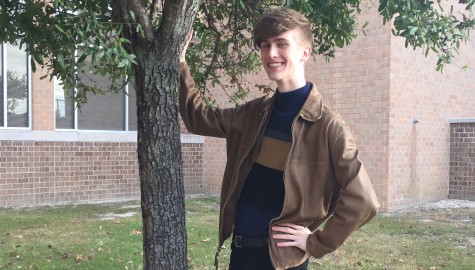
Henry Youtt is a senior and enjoys staying busy with whatever he may be doing. He’s the Vice President of National Honor Society and works as a promotional...
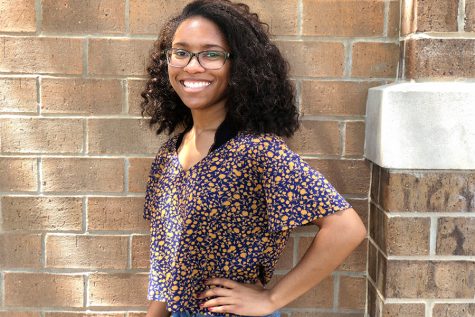
Aliza Porter is currently a senior. She likes to spread positivity. She loves to exercise and do kickboxing in her free time. She has a huge passion for...




